So you want to build hype for your campaign? Our campaign strategists at Bluetext have some tips for you. Assuming you’ve already started building out your campaign, you should have an idea of what your goals are. A common goal is to build awareness and excitement. When building excitement ahead of your launch, you want to bring an air of mystery. Balance announcing details of your campaign while leaving enough to the viewers’ imagination. Some effective teaser mediums include social media snackables, physical swag, email campaigns, or teaser trailers.
When Bluetext recently launched Phosphorus’ Thing Tamer, we decided to keep things mysterious. So, we began with the organic promotion of teaser videos to curate a collection of content for the dramatic launch of a full campaign without sacrificing ad spend. Once our audience’s interest was piqued by compelling graphics and intriguing headlines, we directed their attention to the campaign landing page. This landing page hinted at all things to come and encouraged users to sign up for exclusive notification of the launch. The landing page was designed to be as engaging as possible, with promotional movie posters, two different trailers of the Thing Tamer series, and on-scroll animation to introduce the personified things and interactive carousels to reveal campaign messaging and key stats. signed up for the email list, they received a thank you email that further teases at the Things to come.
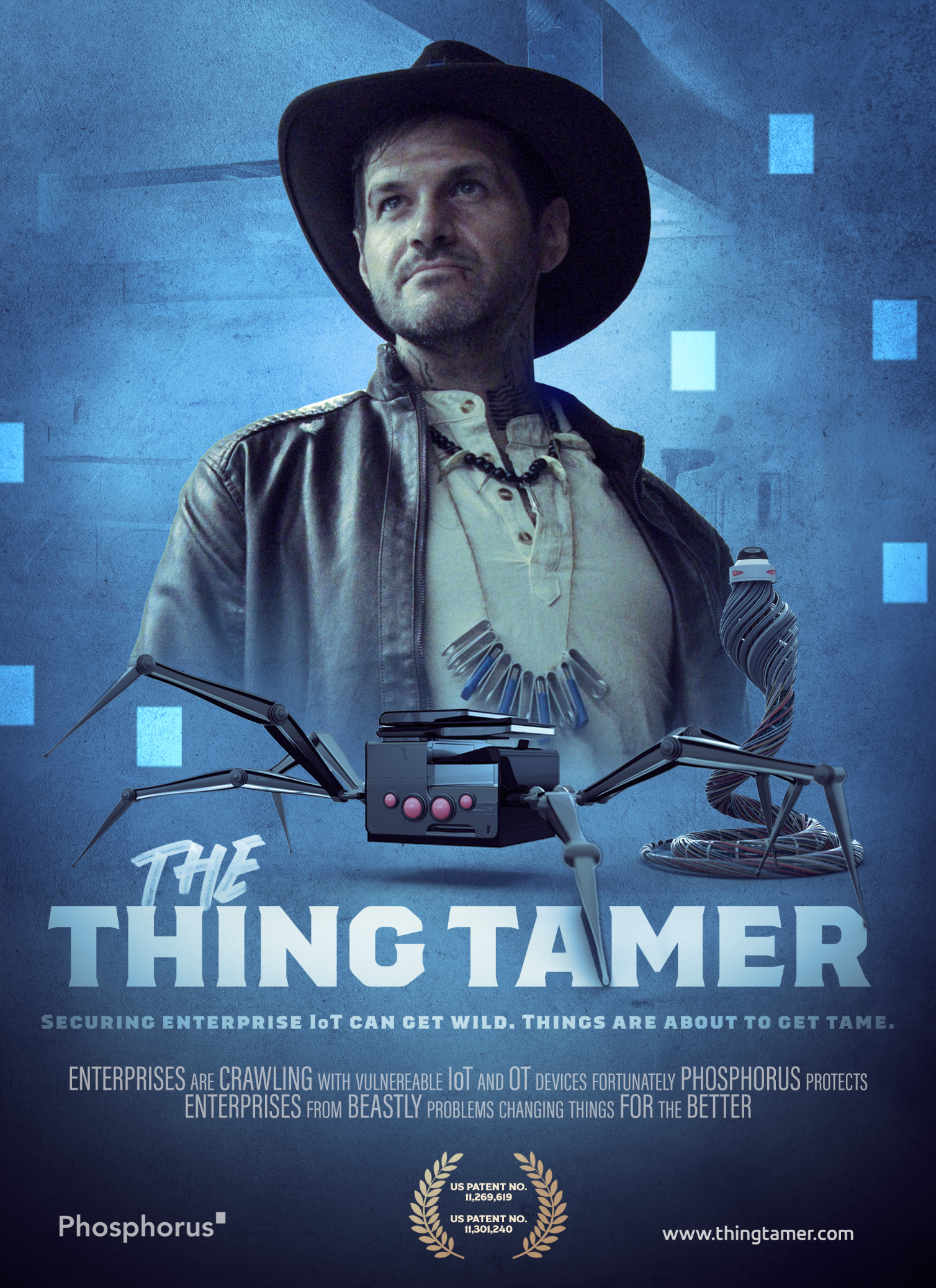
The first trailer named the Beast Trailer worked to establish the problems Thing Tamer solves. Offices with countless enterprise IoT devices are at high risk of being exploited by unsuspecting sources. Each device has its own firmware and unique language making managing all of them a complicated process. Without giving too many details away, we put a spotlight on common problems enterprises face. This was followed up with the second trailer, which starts off by slowly revealing our hero, the Tamer, an IT version of Indiana Jones meets Crocodile Dundee. By shifting focus to our IT guy wearing the Tamer’s hat, users are able to envision themselves as the ones resolving their IoT devices’ vulnerabilities. The teaser strategy allowed for the campaign to slowly introduce the problem with an air of mystery, leaving them craving more for the full campaign to unveil the solution. Separating the story into digestible trailer videos keeps the target audience engaged for an extended period of time, building upon their interest and education with every touchpoint. Not only does it allow for multiple follow-ups and a nurture strategy, but the shortened length of each video also ensures that viewer attention does wane while watching a long-form video. Hitting the viewer with messages one at a time increases the likelihood of memory retention and builds upon Phosphorus’ brand association. At the end of the day, a successful message is one that users can connect with, and that’s just what we did.
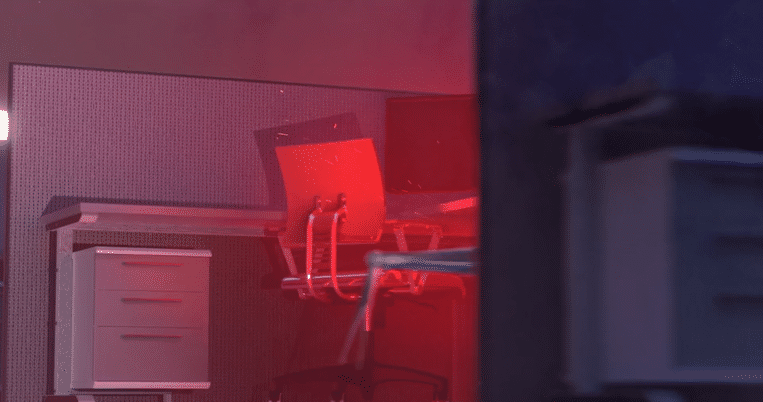
Similar to Thing Tamer’s landing page where visitors could engage with different elements to learn more, the recent The Batman movie had a fun way of building hype ahead of the movie’s premiere. Visitors who found the secret website through a hidden message on the official movie poster were able to talk with the Riddler and solve additional puzzles. Those who solved the puzzles were rewarded with exclusive clips and pictures from the yet-released movie. Once the movie was released, Warner Brothers went a step further and updated the page to reflect the domain being seized by the fictitious Gotham police department. Warner Brothers managed to engage with their target audience over the course of weeks, thanks to a clever Easter Egg hidden in their posters. Being given the opportunity to dive into the Gotham universe in this unique way allowed the audience to connect with the film and get hyped for the official movie release.
Phosphorus also engaged in a few organic social media promotional posts to promote its campaign launch. Social media serves as a great opportunity when trying to build awareness. That being said, Phosphorus didn’t want to spoil too much, so we kept the captions short and used the two trailers and social snackables for the LinkedIn promotions. Utilizing cross-channel promotions and various forms of media increases the likelihood of your users finding your content and engaging with it. Again, at the end of the day, how can you build excitement if your campaign isn’t known? Agencies like us here at Bluetext have the expertise to guide you through the optimal campaign launch.
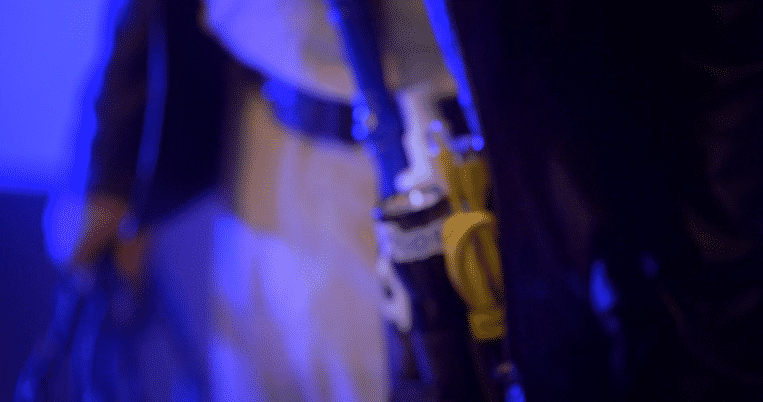
No two campaigns will be the same, and while the Phosphorus campaign succeeded based on its goals, your success isn’t a guarantee. At the end of the day, your best bet is to engage with a trusted campaign-focused agency to build hype for your campaign launch. Once you’ve launched, we work with you to drive paid marketing and PR efforts, ultimately driving users to engage with your business. Want to learn more about how Bluetext can help your campaign? Get in touch with us here. To learn more about our Thing Tamer campaign, check out the full breadth of our work here.
What’s the last campaign headline you remember? Odds are you probably saw the ad within the last couple of hours, but still couldn’t recall. People don’t remember bland corporate messaging, they remember bold and creative ideas. The physical and digital world is swarming with overused taglines and empty brand promises, steepening the uphill battle to stand out. Enter personification, a guiding hand in the effort to connect with target audiences. For years, corporations have been using people and creatures to personify the very real, but often intangible, challenges and solutions consumers face. From older instances such as Mr. Coffee Nerves to newer versions like Allstate’s Mayhem Man, these brand personifications help consumers connect on a more memorable, substantial level.
Think about it this way, are you more likely to remember a long list of features or a wild personality? Odds are, unless you’re a computer or robot, you’ll remember the personality much better. Why? Because you’re human which is exactly why personification tactics are so successful. Brands like Allstate have famously created characters around common but maybe overlooked problems to draw attention to how insurance can solve those problems. Putting a customer’s challenges in a palatable form makes it easier for them to face the problem and consider your brand as the best solution. That’s exactly what the Bluetext campaign and 3D motion graphics team did with Phosphorus’ Thing Tamer. Phosphorus is an enterprise IoT remediation solution with enriched data and visibility to defend every connected device, which in the Internet of Things revolution is far more than the average person expects. In our first trailer for the campaign, we establish the scale of various IoT devices around the office to put into perspective how vulnerable enterprises truly are. That printer in the corner? Fully hackable and could be a potential entry point for malicious actors. I bet you didn’t expect that threat lurking in the background. In the second trailer, we frame the problem as to how to protect the wide range of enterprise IoT devices we depend on daily and how with Phosphorus, a cybersecurity platform personified as an Indiana Jones-esque hero out to save the day. By assigning tangible symbols and actions to the problem and a face to the company Phosphorus enforces its capabilities and in an exaggerated but memorable storytelling way, can step in to save the day.


This strategy can work across many industries with the right approach. Varonis approached Bluetext to create a campaign around the idea of “avoiding unnecessary exposure.” Our campaign strategists ultimately chose the personification of cyber hacks and exposure as its shocking but memorable approach. Varonis works to secure unstructured data, so Bluetext’s campaign entailed a CEO walking around seemingly naked to convey the risky vulnerability of not securing company data. The campaign was a huge success at quickly catching customers’ attention, helping identify a potential problem they weren’t aware of, and providing them with the solution of working with Varonis.

Similar to Varonis, in Phosphorus’ first trailer we used a haunting Black-Ink Widow IoT device to portray a dangerous but unsuspecting vulnerability lurking around the office. Paired with intense jungle drum music, the scene evokes an apprehensive sense of being under constant threat. In the second trailer, Bluetext introduces the hero, Thing Tamer, surrounded by blue light and IT gear ready to hunt and defend against dangerous vulnerabilities. Paired with visuals of nefarious emoticon faces on IoT devices accompanied by red lights, we established a good versus evil theme that only Phosphorus’ Thing Tamer can tackle. The dramatic themes and high-impact visuals of the trailers are meant to provide audience interest and enforce the reality of IoT device vulnerabilities they may not notice lurking about at night. It sets the stage for a memorable, engaging story of how a security platform can quite literally step in as “Thing Tamer” to corral these unruly and beastly “Things”.

Another example successful brand personification campaign is the Maytag Man, a character that has been around for decades. Historically the Maytag Man was portrayed as lonely and bored because Maytag’s machines were so reliable that no one needed a repair man. However, a recent revamp personifies the machines as a strong, attractive, and ‘tough as steel’ Maytag Man throughout people’s homes. Similarly, when Bluetext ideated on potential names for Phosphorus’ campaign, we opted for simple alliteration pulled from the Internet of Things (IoT). Thus, the “Thing Tamer” was born. An easy to say, easy-to-remember name that ties back to what Phosphorus does and the ambitiously pioneering ethos. This charismatic adventurous hero increases the chances of customers remembering Phosphorus first when searching for IoT protection.
Whether you’re trying to be the next Mayhem Man or just have some fun with your personified brand, the experts at Bluetext can help. Our professional writing, creative, and video teams are eager to get your brand’s campaigns to the next level. Want to learn more about how Bluetext can help your campaign? Get in touch with us here. To learn more about our Thing Tamer campaign, check out the full breadth of our work here.
When it comes to digital marketing analytics and tracking, there’s a clear winner of the worldwide popularity contest. With use on over 50 million sites, Google Analytics is the most popular tracking and analytics platform available –and for good reason. With detailed insights and reports, Google Analytics gives marketers a comprehensive look at how effective their website and/or application is as a marketing tool. As a DC marketing analytics company, Bluetext has worked with countless brands to set up their Google Analytics and make use of its insights. Along the way, we’ve learned many lessons from best practices to little-known tips and tricks. In the setup process, a key step is properly defining and deploying goals in your Google Analytics instance to better report on conversion actions. As a dc marketing analytics company, we know that defining these goals is a foundational aspect of any analytics and attribution plan, so we’ve outlined the fundamentals of Google Analytics goals below.
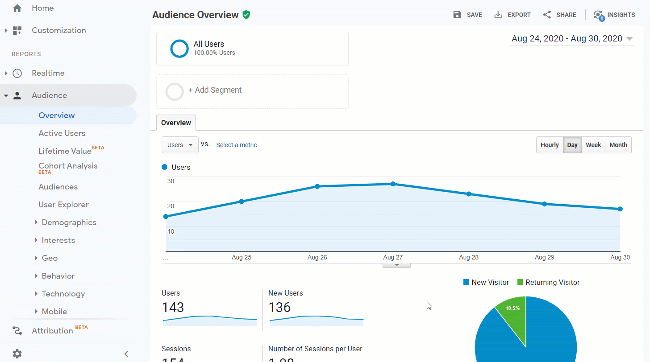
How Do Google Analytics Goals Work?
The beauty of Google Analytics is that it’s never a one-trick pony, or built for a specific type of business. The analytics platform is highly adaptable to any company’s business goals and creates custom dashboards to visualize your specific objectives. Google Analytics goals are uniquely customizable and can track many different actions, from specific page views, how long users stay on your site or application, form submissions, and more. Goals, additionally, can have a monetary value assigned to them, which allows you to track general ROI, ROAS, and countless other marketing metrics. The goal and conversion data computed by Google Analytics also allows you to define a series of reports to dive deeper into your website and paid marketing metrics. The chart below helps further define the four-goal types in Google Analytics:
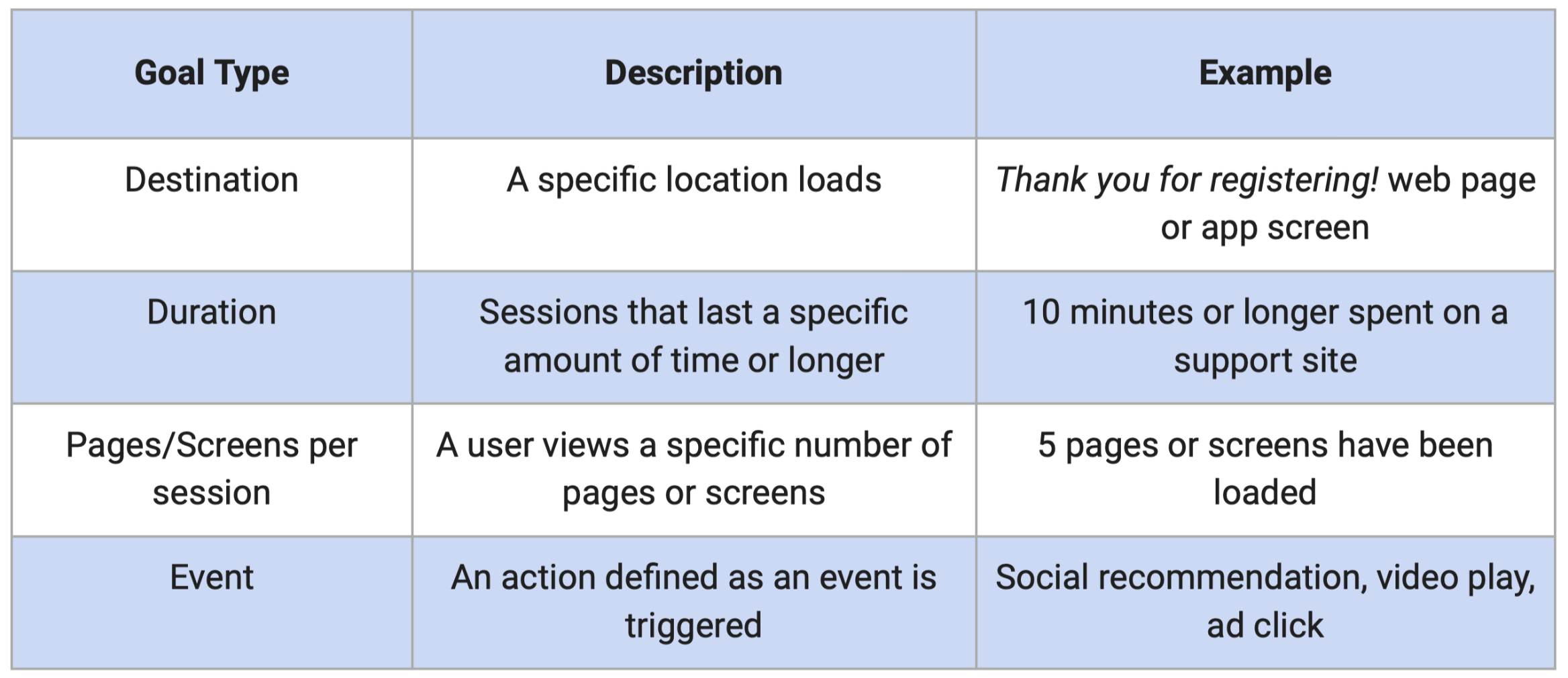
How Can I Start And Be Smart About Their Goals?
If you aren’t tracking explicit conversions yet, Google’s “Smart Goals” are a simple way to help optimize your performance. Smart goals were developed by Google as a way for marketers to track the most engaged sessions on their website. With smart bidding, Google uses machine learning to identify and examine dozens of intent signals about your website sessions, assign each session a score, and determine the sessions that would be most likely to convert. While smart goals can be great for many reasons, there are limitations. For example, smart goals are not customizable, they are currently only available for websites (not applications), and they are not available for websites that receive more than 1 million hits per day. It’s like turning on autopilot for your tracking, great for a period of time to be a little more hands-off and let algorithms do the work, but eventually, you will want to drill down and focus on converting potential prospects. With these limitations in mind, we recommend working with a marketing analytics company, like Bluetext, to ensure you are able to track explicit conversions, making your data more valuable and accurate.
What Are Best Practices For Setting Up Goals?
When setting up your goals, consider these best practices:
- Give each goal a unique and descriptive name. Especially when your marketing analytics becomes more robust over time it pays off to be organized from the start.
- When possible, assign a goal value to help monetize and evaluate your conversions. You can also use a number scale to assign importance to your goals (low-value = 1 and high value = 10) if you are unable to assign a monetary value.
- If you ever need to change goals, keep track of when and what you did. Goals are not applied to historical data, so changing one will change conversion data from the point of the change.
- Before pushing your goals to the live environment, ensure you use Google Analytics’ “Verify this Goal” feature to see how the goal would have converted over the last seven days.

Setting up goals in google analytics can be frustrating and time-consuming. The work it takes to set up google analytics goals, however, is worth the time investment. Working with a marketing analytics company can be a great way to effectively implement goals and reduce the amount of time needed to do so.
Interested in working with a marketing analytics company to ensure your Google Analytics goals are effective and properly set up? Contact us here!
Picture this. It’s a Friday night, and you’re deciding where you want to eat dinner. As you walk down the street, you’re overwhelmed by an abundance of options. Storefront posters shout weekly specials, stapled flyers advertise happy hours, promoters beckon passersby into newly opened spots, all merging into a blur of sensations.
But then, you hear it, your favorite song playing amidst the thrum of the busy street. You follow the sound to a restaurant you hadn’t noticed on the first pass, where the music continues to bump along on outdoor speakers. From the patio, you catch the smell of fresh food leaving the kitchen, getting your stomach growling and enticing you further. Stepping inside, a waiter passes by, carrying your favorite dish to a nearby table. Taking in the room’s ambiance, you turn to your friends and proclaim you’ve found tonight’s spot.
Now you’re probably wondering why I’ve had you go through this foodie fantasy with me. Part of it might be that I’m writing this blog around lunchtime and can’t help but steal glances out the window at our neighborhood sushi spot while I type. But more importantly, it serves as a perfect analogy to illustrate the value of inbound marketing and what it can do to improve lead generation for your business.
So What IS Inbound Marketing?
Inbound marketing is a methodology centered on drawing potential customers to your brand instead of trying to push your brand out in the market. Rather than utilizing external marketing tactics like TV ads, billboards, and flyers, an inbound marketing strategy seeks to attract customers by creating valuable content and experiences catered to them. Put broadly, outbound marketing brings your offering to your prospects, while inbound marketing brings your prospects to you. In doing so, you guide potential customers to your website with a pre-established positive impression—making it more likely that they’ll go with your product or service when they’re ready to buy.
Inbound marketing is content-led and hinges on providing potential customers with content that is genuinely meaningful to them. Because of its content-led nature, inbound marketing boosts SEO and organic traffic acquisition and builds trust and credibility in your brand by positioning your company as a thought leader in the market. Throughout the customer journey, the goal of inbound marketing is to add value. To be successful, you must attract users to your website with relevant and high-quality content, engaging with them and clarifying your value proposition. You must also delight users by acting as a reliable partner with a vested interest in their long-term success.
Building Your Inbound Marketing Strategy
Proper planning and optimization will be critical to the success of your inbound marketing program. Creating compelling content is about strategic planning and commitment rather than budget. You can’t just throw money at content creation and expect to come away with something compelling, you have to put your head and heart into the work. With that in mind, here are some thought-starters to create and maintain your inbound marketing strategy.
Know Your Audience and Space
Defining your business goals and buyer personas should be the genesis of any inbound marketing effort. You can’t write content to inform your customers until you’ve identified your target audience and learned all you can about them.
In the same vein, choosing the right platforms to distribute your marketing materials on will be critical in ensuring your content reaches the right prospects. Determine the best way to reach your target audience, whether through Twitter, Pinterest, Facebook, your blog, or elsewhere, to ensure your content gets to the right prospects.
Create a Journey Worth Taking
With effective inbound marketing, there should never be a dull moment in the customer journey, from impression to engagement. Aim to provide content across the customer experience. Preemptively answer the questions prospective customers will likely have at each stage of their buying journey. What makes you unique? Why should they listen to what you have to say? Successful inbound marketing tells prospective customers a unique and compelling story about your brand from first sight to final sale.
Consistency is Key
Inbound marketing is a game of consistency. Maintaining a constant stream of content tailored to your market’s current pain points and questions supports you in staying relevant and building your brand’s perception as a trusted thought leader. To effectively support your inbound marketing strategy, prioritize creating and executing on a content calendar without fail. A set schedule ensures relevant content will consistently engage your audience and keep your brand fresh in consumers’ minds. And in case you need more convincing, a 2021 Hubspot study found that brands who publish blog content at least 16 times a month generate 3.5x more website traffic and 4.5x more leads than companies that only update their blogs a few times a month.
Measure the Metrics that Matter
There’s a plethora of metrics to choose from when measuring the success of your inbound marketing strategy. From analyzing SEO rankings to measuring inbound links, these resources give valuable insight into how your campaigns perform. Prioritize regular auditing and analysis of these metrics while managing your inbound marketing to understand how effective your efforts have been and see how they can improve. If particular topics are gaining the most traction with viewers, concentrate on these areas and find unique ways to expand upon. If certain content is not generating or retaining enough attention, there is your sign to pivot.
Inbound Inspiration
Now that you’ve got your strategy set and these best practices behind you, here are some examples of engaging online content to fuel your inbound marketing efforts.
Blog
A mainstay of content creation, blogs are the perfect way to answer your prospects’ pressing questions or pique their interest with accessible long-form content. According to HubSpot, marketers who prioritize blogging are 13x more likely to get a positive ROI than those who don’t.
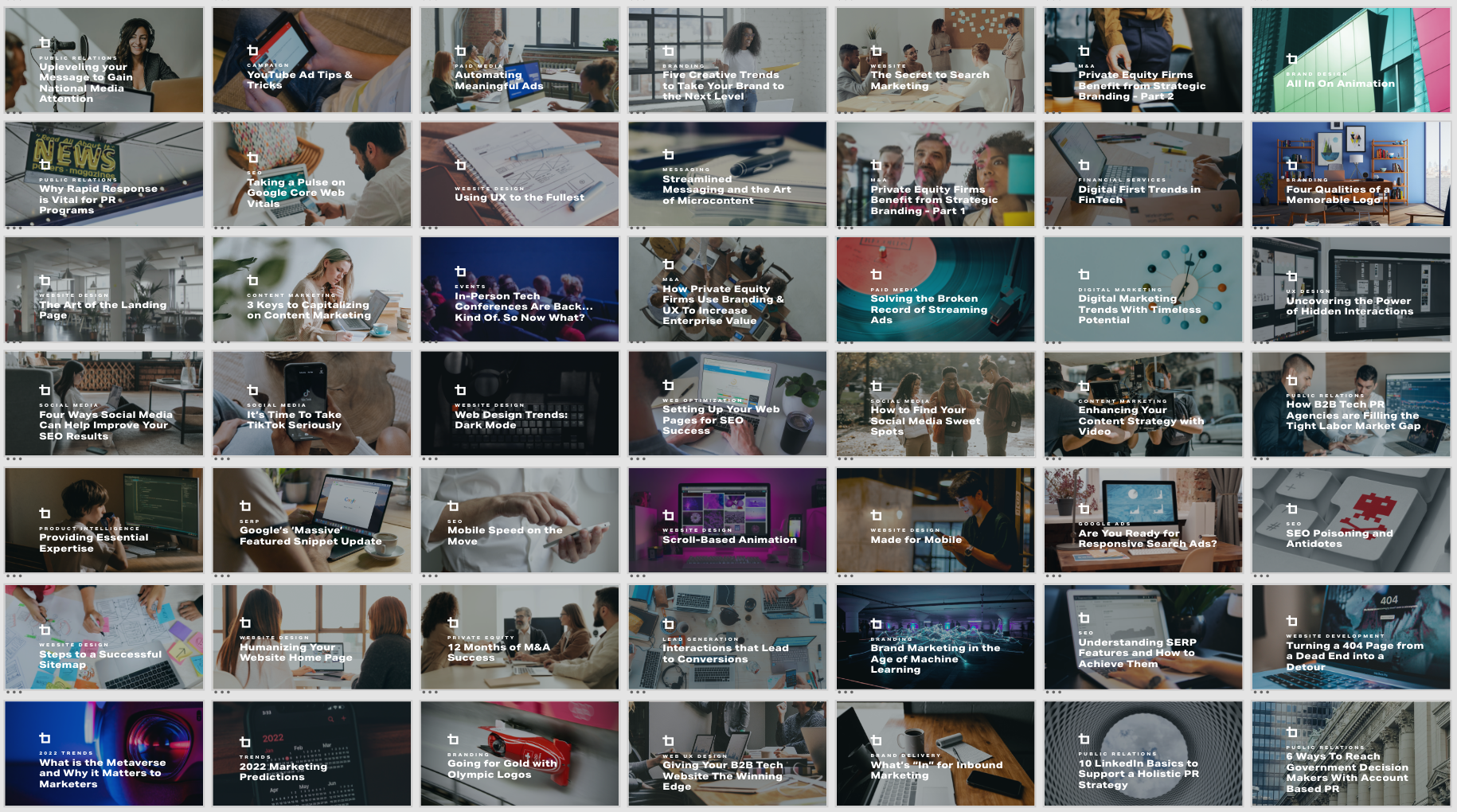
Case Studies
Imagine that you’re the owner of a growing business in the market for a piece of cybersecurity software that you’re unfamiliar with. You sort through an endless stream of ads and webinars talking about concepts and capabilities that all fly over your head, leaving you utterly lost. But while browsing through one company’s website, you come across a case study telling the story of a company eerily similar to yours. Reading their testimonial and hearing how transformational the software has been for them, you can’t help but think that it could do the same for your business. Emboldened by the relatable success story, you confidently choose to purchase the cybersecurity software.
That’s the power of a case study. Allowing you to focus on different customer personas in your market, case studies sway fence-sitting customers with highly-tailored promises of success.
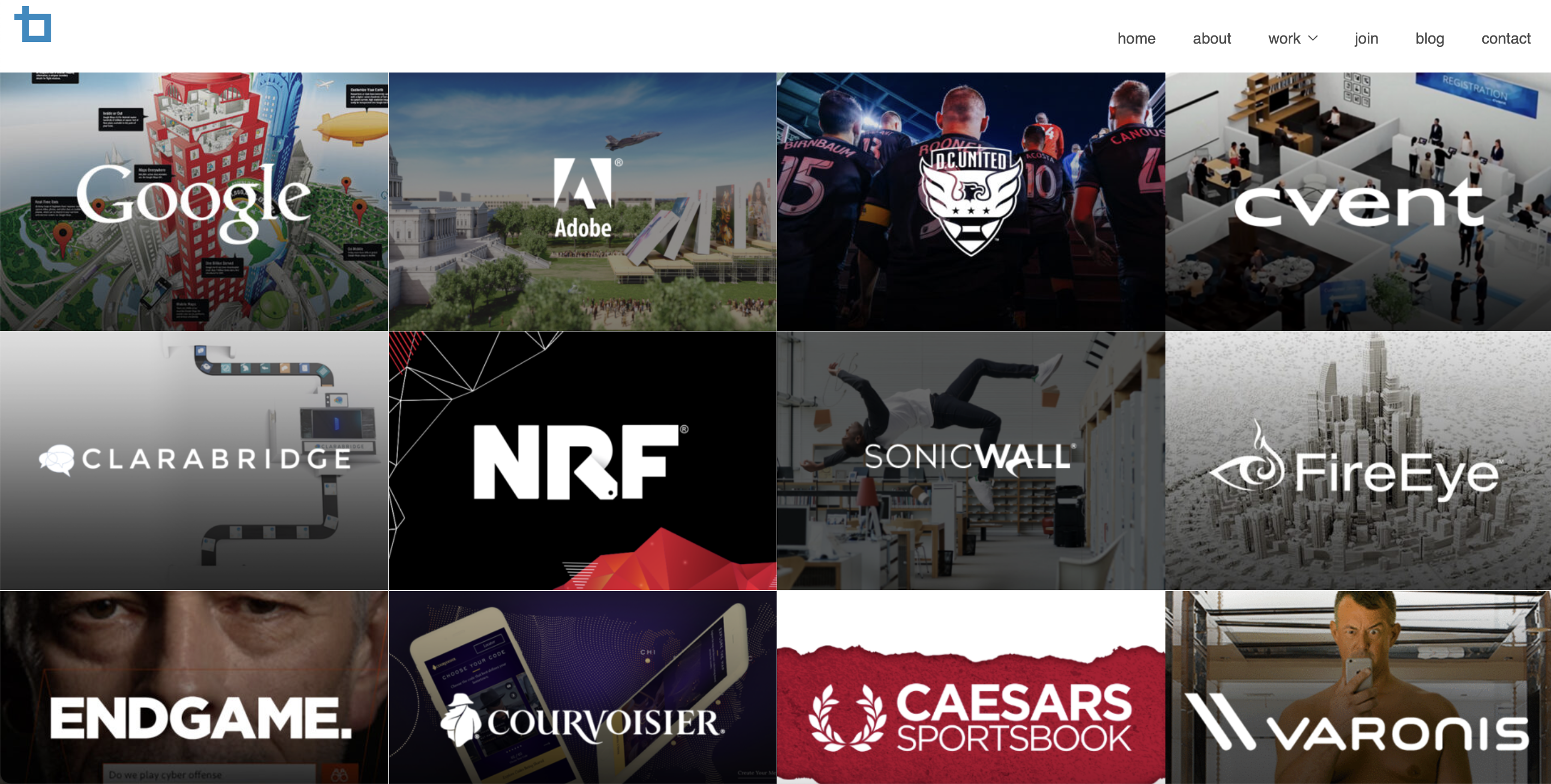
Infographics
As helpful and engaging as written content can be, people don’t always have the patience to sit down with 1000 words about humanized homepages. Often, prospective customers just want a quick snapshot of insightful data packaged in an easily digestible and aesthetically pleasing format.
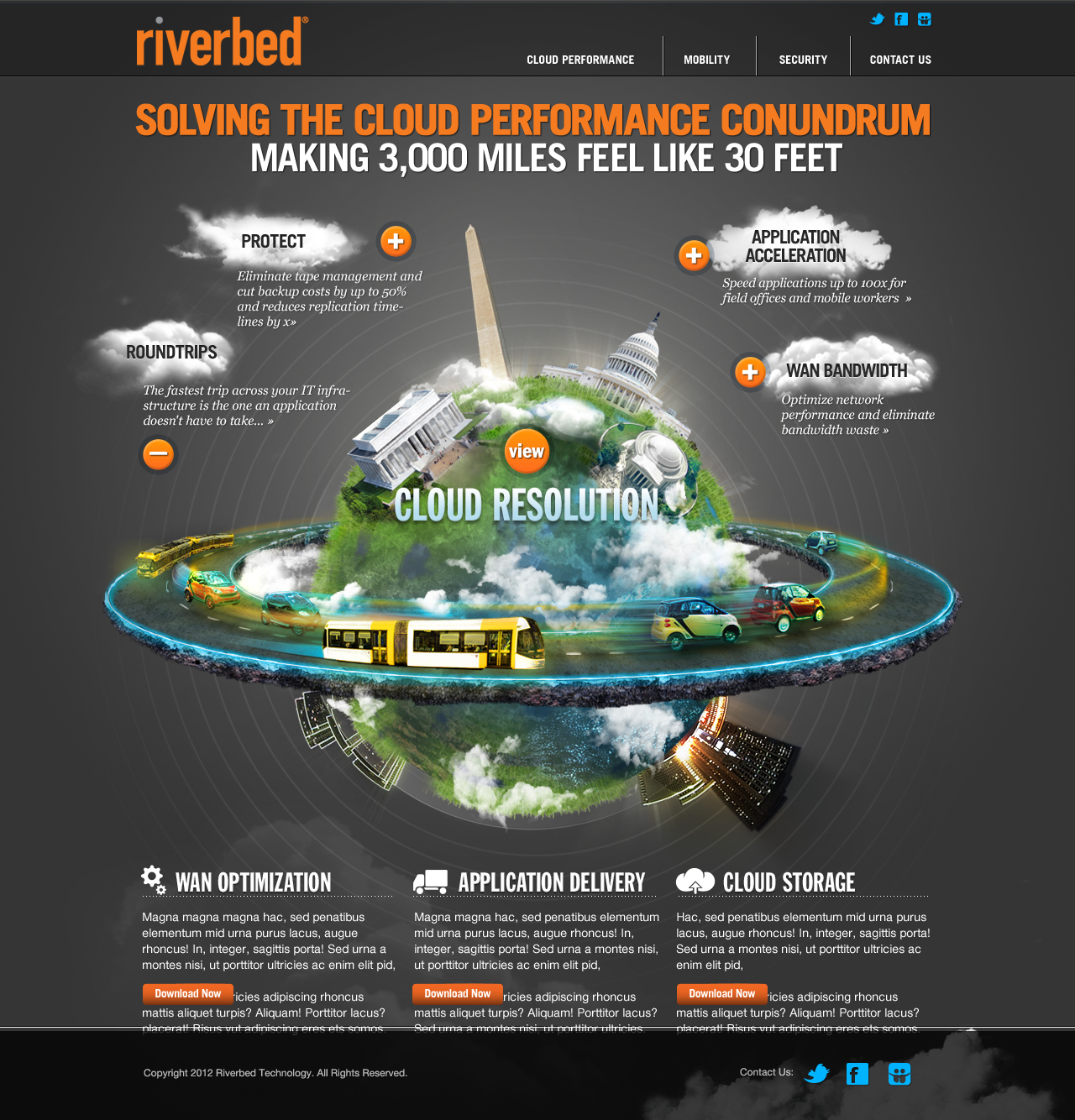
Webinar
It isn’t always easy to inject your brand’s personality into written content. While more informal content like blog posts have some wiggle-room, highly polished pieces like whitepapers and case studies often lose the human voice behind your brand.
That’s where webinars come in. Webinars-an internet seminar presenting lecture-style content to an exclusive audience-create the feeling that your brand is in direct conversation with prospective customers. They let consumers connect with the people powering your company rather than interfacing with an impersonal business entity. Additionally, the ability to request information from prospective customers for entrance to the webinar serves as a phenomenal lead generation tactic.
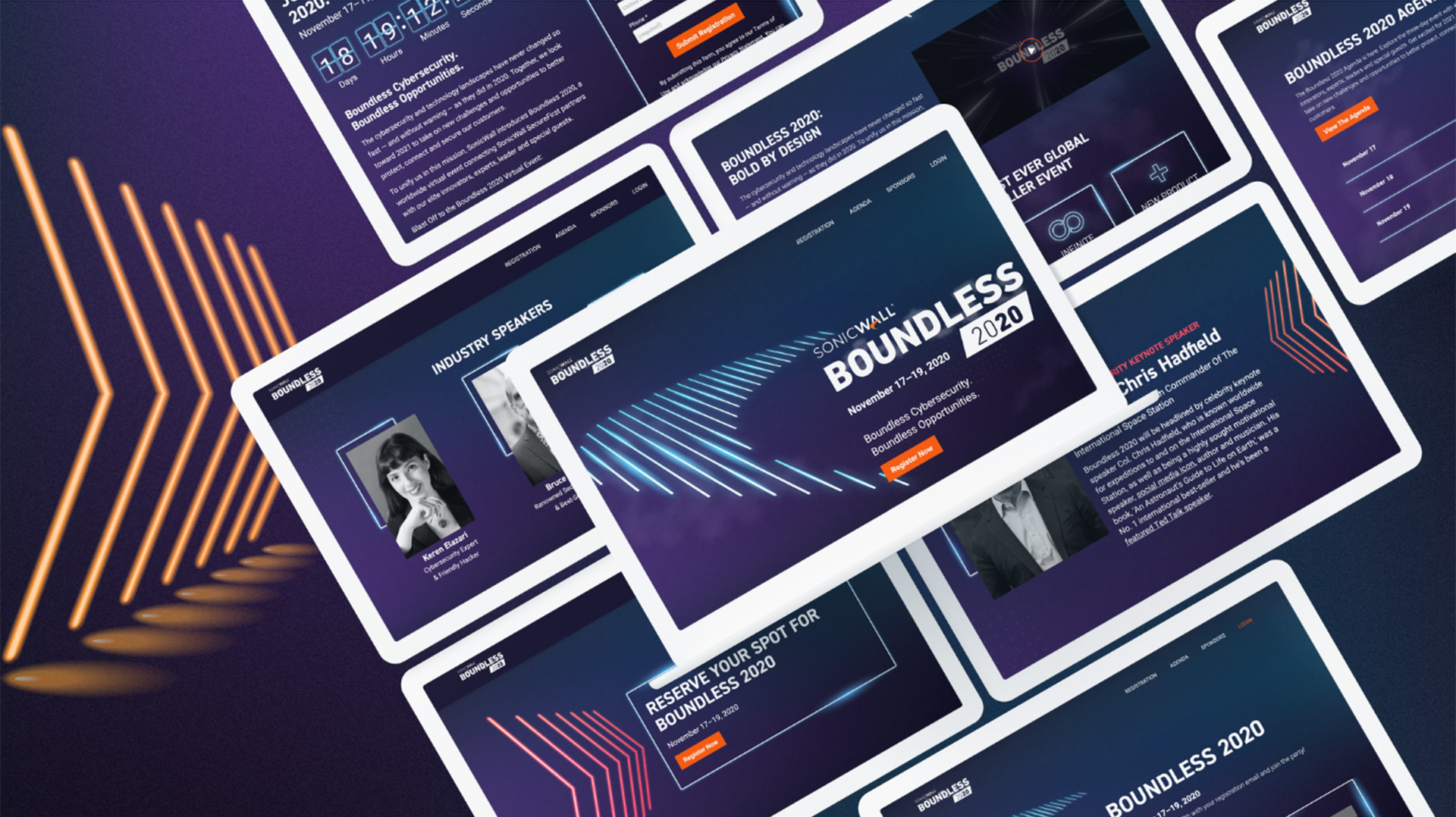
Video Series
It’s no secret that video content is an enormous part of marketing. It’s engaging, constantly growing, and makes up the majority of content audiences across industries are digesting on platforms like TikTok, Facebook, Instagram, and Youtube. But a key trend to capitalize on with your video content lies in its size.
While written content benefits from long-form structure, video content functions best when bite-sized. While things can vary based on platform or user persona, a general rule is that social media users will lose interest in videos longer than a minute or two.
No matter what path you decide to take your inbound marketing strategy down, Bluetext offers expert advising and cutting-edge capabilities to ensure you’ll have everything you need to succeed. Contact us to learn how inbound marketing can grow your business.
Since late last year, the technology industry has been alight with news and developments surrounding the Metaverse. Companies large and small are betting big on what is seen by many as the successor to the internet. Microsoft’s record-breaking acquisition of Activision Blizzard has been seen by many as a Metaverse play. The likes of Facebook have even restructured their entire organization and established a new parent company, Meta, named after the Metaverse.
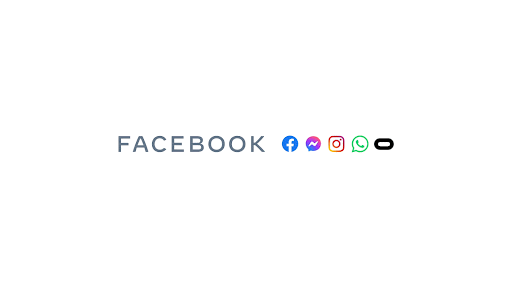
But what exactly is the Metaverse? In simplest terms, “The ‘metaverse’ is a set of virtual spaces where you can create and explore with other people who aren’t in the same physical space as you.” If you’re still confused, that’s okay. The Metaverse is constantly evolving as more and more companies invest in the concept. Chances are you’ve already experienced flavors of the metaverse but may not have even realized it. To break it down, major players in the technology industry are looking at the Metaverse from a capabilities perspective for the likes of:
- Real-time 3D graphics
- Feature sets that overlap with real-world activities
- Personalized avatars unique to each user
- Person-to-person social interactions that are less competitive in nature and more goal-oriented compared to stereotypical games
- Designs best well-suited to virtual and augmented reality headsets
- Links with outside economic systems so people can profit from virtual goods
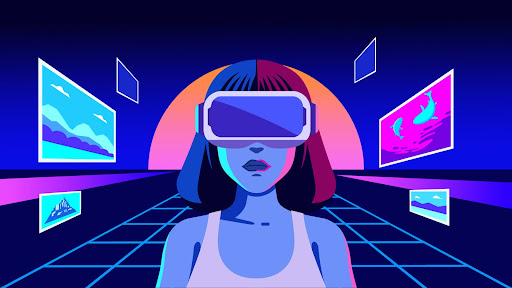
Regardless of how you feel about the Metaverse and its capabilities, there’s no denying that AR/VR is growing more popular. In 2021, it was estimated that approximately 85 million users experienced AR or VR at least once a month. Virtual reality headsets, which were originally intended for gamers back in the 1990s, have picked up momentum in the past decade as companies are releasing sleek, futuristic consumer headsets and applications. That userbase will only continue to grow as VR/AR devices become more accessible from a cost and usability perspective. Given the fluidity of the concept of the Metaverse, the marketing opportunities are truly endless at the moment. Below, we take a look at just a smattering of ideas for marketing in this next generation of the internet.
1. Gamifying your Brand
As we’ve discussed before, gamification is the act of taking a process that already exists and applying game mechanics to make it more engaging. Given the current state of the Metaverse and its existing uses, gamifying a brand is the first natural step we’ll see companies take as they expand their reach into this additional marketing channel. We’re already seeing some companies dive headfirst into brand gamification in the Metaverse. To promote the new Nike React Flyknit running shoe, Nike created its own virtual world, called Reactland, allowing users to create avatars of themselves and then navigate through the game’s forests and rooftops while jogging (in real life) on a treadmill for three minutes.

2. Parallel Metaverse Marketing within Real-Life Marketing
Just as we create physical manifestations of digital marketing campaigns, marketers need to be ready to expand their focus to the Metaverse as a third component of any future campaign. Campaigns targeting millennials and Gen-Z’ers will comprise the majority of initial Metaverse marketing campaigns, as these audiences are the predisposed primary users of the platform. Experiential marketing will also be a major component of any Metaverse marketing campaign, offering branded installations and events that users can interact with, as opposed to just placing simple ads.
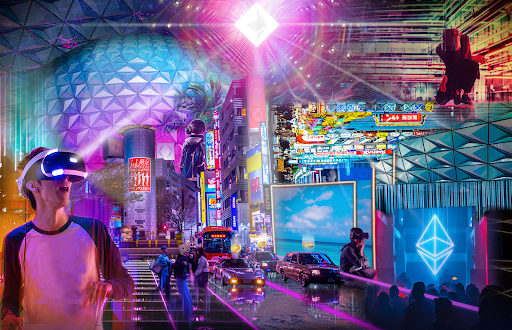
3. Harness the Power of Facebook’s Meta
While Facebook is still in the early stages of rolling out its Metaverse to consumers, there’s a good chance that any experience will include digital advertising and in-experience transactions. Anything from building virtual stores, hosting immersive events, or creating Facebook Ads will no doubt be considered. Additionally, we’ll definitely see comparable offerings from other companies staking their claims in the Metaverse hype such as Walmart and Microsoft.
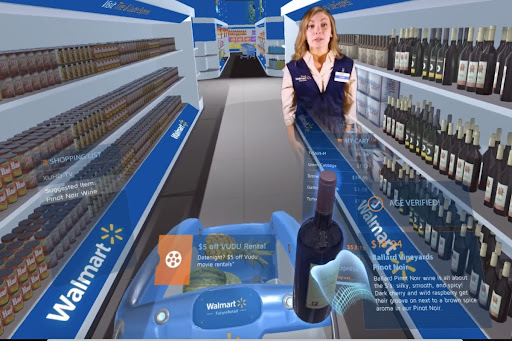
It’s fair to say that the Metaverse in its current state is filled with uncertainties. While many companies are pouring tons of capital into the space, no one knows what it will look like in five to ten years, let alone next year. That being said, it will be important for marketers to stay in the loop and decide when might be the best time to stake their own claim in the Metaverse. Interested to see how Bluetext is taking advantage of up-and-coming technologies on behalf of our clients? Contact us.
Marketers often approach their content strategy with the simple goal of conveying a message to their target audience. But nowadays, that’s not enough for maintaining an effective content strategy. Before a user ends up on your site, they typically search for information through one or more Google searches. These Search Engine Result Pages (SERPs) are where users find results that the search engines deem to be the most relevant to the query. Depending on the relevance of the site content, users may also see a SERP Feature (a well-packaged snippet of information from the relevant search result’s page). This gives users a quick view of the information they are looking for while saving them time from digging through multiple pages. As a digital marketer, your content strategy should aim to meet the purposes of these possible SERP Features to increase your chances of being featured on SERPs and ultimately get a user to visit your site.
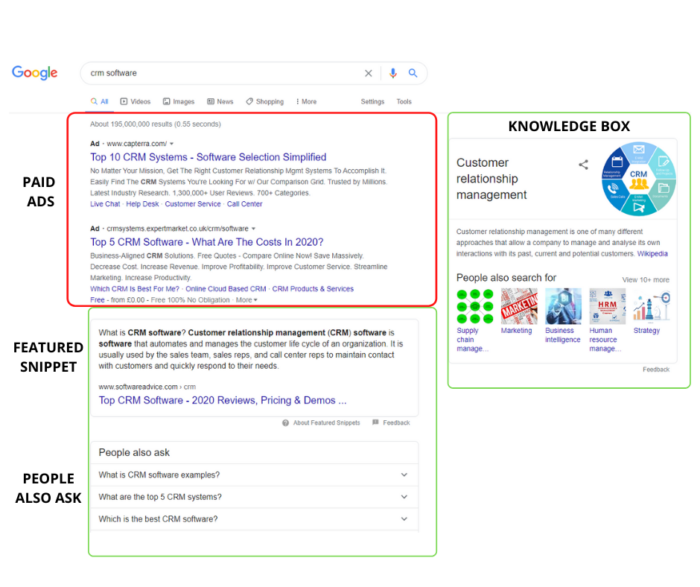
Nowadays, search engines have evolved to the point where they can determine the intent behind users’ searches to provide the most relevant results. As such, you need to be more deliberate in crafting your content to ensure it’s meeting your audience’s needs at their stage of the buyer’s journey. Ideally, you should have content that can accommodate all three phases, Awareness Stage, Consideration Stage, and the Decision Stage. But this isn’t always the case depending on your particular audience.
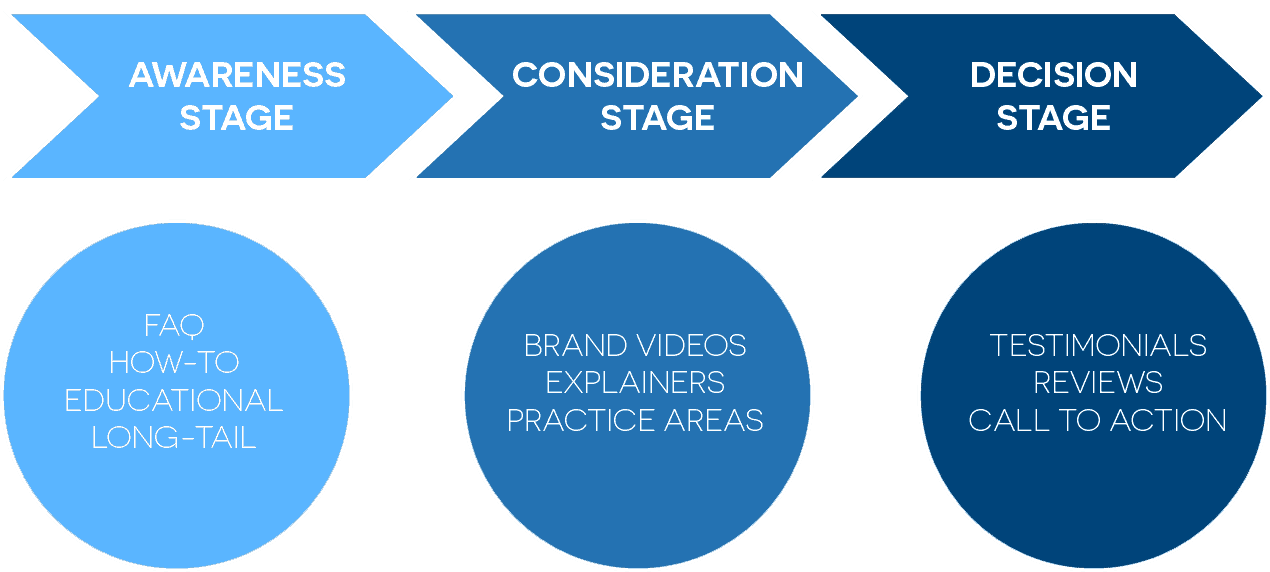
Raising Awareness for Your Audience
In the Awareness Stage, users know they have a problem and are actively searching for explanations of their problem. They aren’t quite ready to pick a solution, so any tools to quickly gather high-level information are beneficial here. This is where SERP Features come in handy. With a little planning, you can optimize your content’s likelihood to be featured in certain SERP Features such as Knowledge Graphs, Featured Snippets, Related Questions, Videos, or Images. All of these features will pull relevant content from your site so long as the search engine determines your content to meet certain criteria. In this stage, you want to make sure your content is very clear in explaining who you are, what services or products you offer, and the why/how of what you do. Oftentimes, including lists or FAQ-styled content is beneficial to search engine crawlers and webpage users!
Considering How to Connect With Your Audience
So now your audience has entered the Consideration Stage, they are looking for solutions and more specifically, how your solution can remedy their issue. Now your content should be more thorough and technical than in the Awareness Stage. Provide concrete examples of how your products or services can solve the user’s problem. Four useful features for this stage are Featured Snippets, Related Questions, Reviews, and Videos. The Featured Snippet works best when you answer the user’s query in very specific ways, whereas Related Questions works best for explaining the “why” behind a user’s query. Featuring product/service reviews on your site also allows you to show up for the Reviews feature which enables the user to better compare solutions and build trust. Lastly, the Videos feature provides a great opportunity to dive deeper into why your solution works for the user.
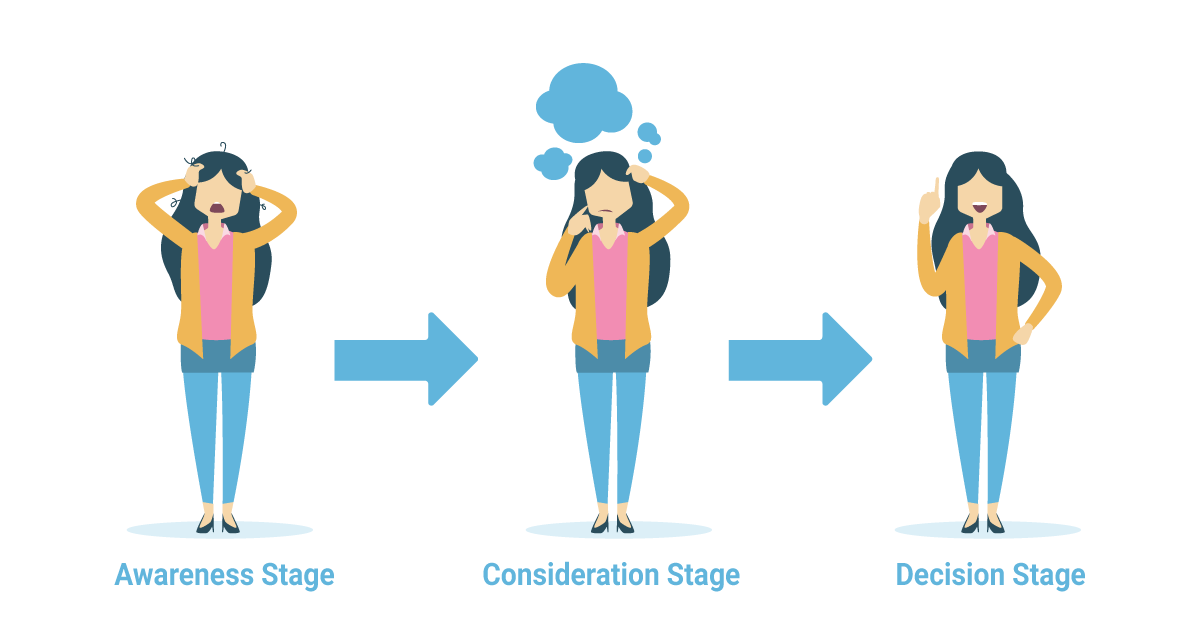
Convincing Your Audience to Make a Decision
By this point, your audience is at the end of the buyer’s journey and just about ready to decide which solution meets their needs. As part of the last steps, users now want to confirm which solution amongst the ones found in the Consideration Stage is best for them. At this stage, all of your content should be as thorough as possible to ensure you’ve answered any potential lingering questions your audience may have. Three Features that excel at accomplishing that are the People Also Ask, Videos, and Long-Form Content features. Tailoring your content to include technical details and statistics as well as client testimonials reassures the user that they’ve picked the right solution.
Overall, when creating a content strategy, no two sites will be the same. Each content strategy should be tailored to your audience and their stage of the buyer’s journey. From there, you can leverage content that is more likely to be shown in the SERP Features mentioned above. As a full-service digital marketing agency, our expert content writing and SEO teams at Bluetext can help determine who your audience is, what stage they’re in, and how best to tailor your content to be displayed in SERP Features. Want to learn more about how Bluetext can help your ad campaigns thrive? Get in touch with us here.
2 years ago SonicWall approached Bluetext with a campaign challenge: “Help us infuse originality within an over-saturated cybersecurity market. Portray Boundless Cybersecurity ability to break free of cyber threats.”
Bluetext’s response? Hours upon hours huddled over brainstorming sessions until the winning idea came to light. Portraying the end-users in a surrealist, anti-gravity state in which they quite literally “break free” from the constraints and anxieties of impending threats. But how could this be done? With a troupe of ballet dancers, a giant trampoline, and an imaginative team of creative & strategic minds the first Boundless photoshoot was made possible.
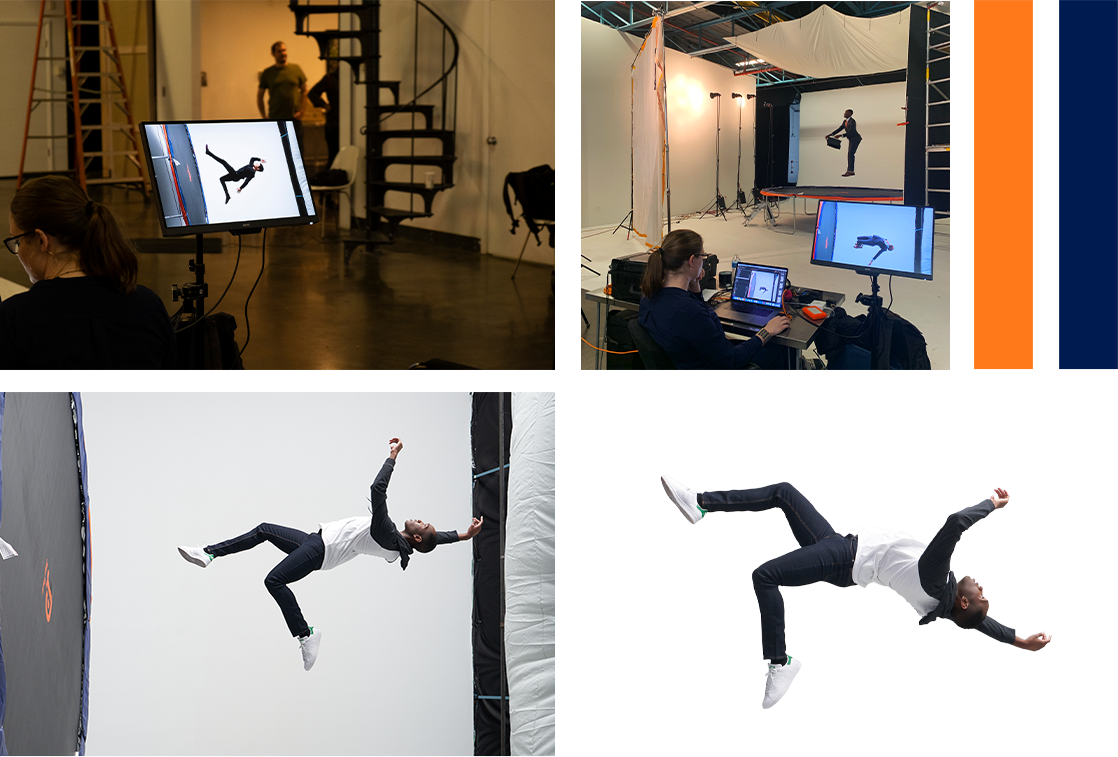
By knowing the unknown, providing real-time visibility, and enabling breakthrough economics, SonicWall protects against boundless exposure points for increasingly remote, mobile, and cloud-enabled workforces. In order to communicate SonicWall’s business values across a variety of businesses, Bluetext prescribed a verticalized approach to target the unique needs of each industry. Every detail, from costume to backdrop, was personalized to resonate with distinct audience personas. To truly stand out and earn attention in a crowded cybersecurity arena, the campaign centered on fantastical floating imagery, which served to visualize an anti-gravity feeling of breaking free of cyber threats. To achieve this vision, action photography of models jumping and free-falling atop a giant trampoline was captured. With custom photoshoots, expert post-production editing, and head-turning taglines Bluetext truly elevated the campaign to new heights. As a collection, the campaign imagery showcased SonicWall’s wide range of customer success, and as individual targeted campaign assets, the images emphasized SonicWall’s application to industry-specific use cases. New website pages, banner ads, and social graphics were developed to reinforce ”When Cyber Threats Are Limitless, Your Defenses Must Be Boundless.”
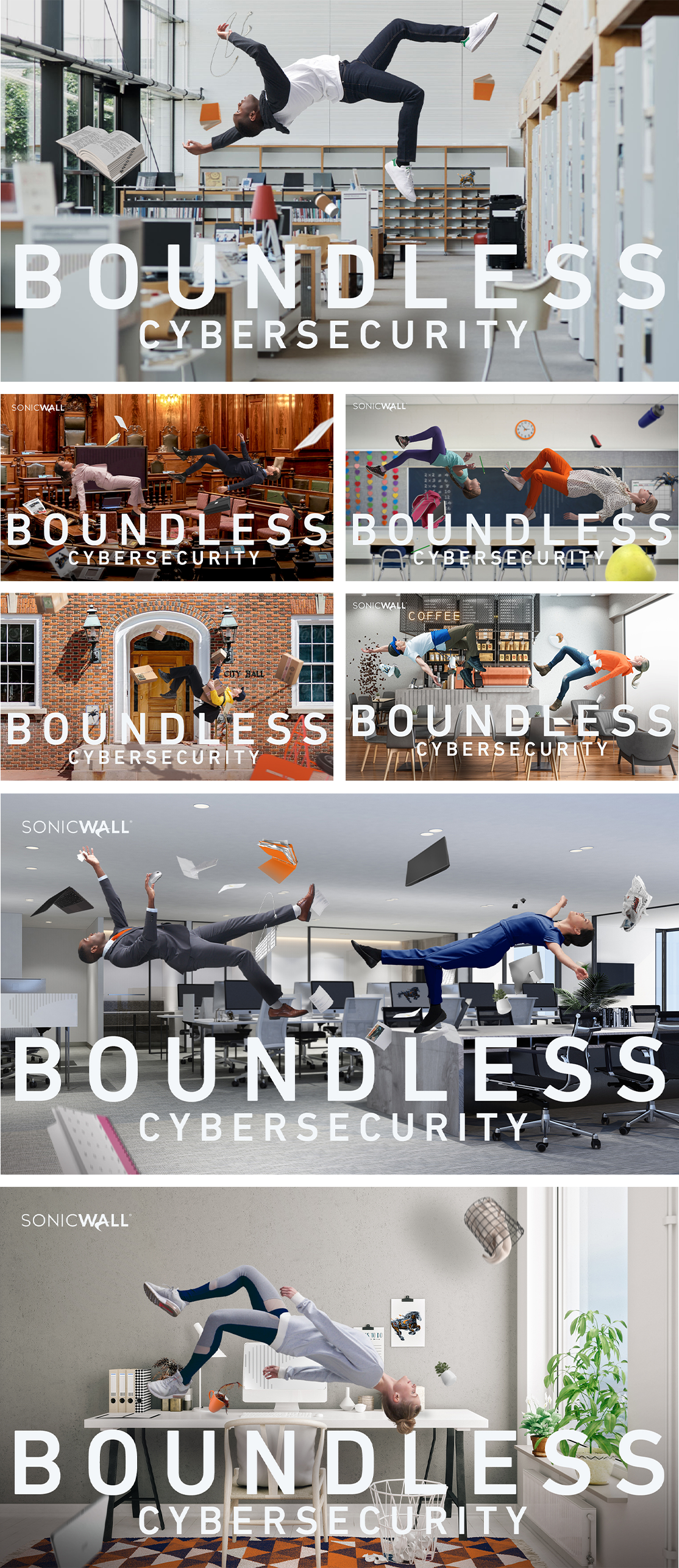
The campaign was a roaring success. So much so that it inspired a Boundless 2.0 campaign that elevated key art imagery to 3D video production to tell the evolving Boundless story. This time, the campaign focused on the end user’s journey into a surrealist, anti-gravity state of mind. The campaign video spans a variety of industry applications, from higher education libraries to retail shops, but focuses on the perspectives of an SMB and remote employee. The narrative describes the current state of cybersecurity, being a sense of closed-off isolation to avoid the fear of cyber threats, but begs the question of ‘what if?’ The main characters are shown proceeding through their daily responsibilities (whether that be commuting into the office, or multi-tasking child care responsibilities at home) until interacting with SonicWall products on their given devices. As these users connect to SonicWall they experience the unconventional possibilities of cybersecurity; ‘What if cybersecurity felt…free?’ The characters are transitioned to a surrealist Boundless world, in which 3D video effects bring a state of gravity-free liberation from constraints of the past. The characters “break free” to realize a more secure, yet freer, future with SonicWall.
To further compliment the Boundless 2.0 campaign video, Bluetext brought the story to life on the SonicWall website homepage and campaign landing page. Both of which feature 3D video in the hero zone to showcase Boundless Cybersecurity for both the remote and in-office workforce. Bluetext animators built a custom 3D environment for each character, which is showcased through 360 pan-around camera effects. Attention to detail was everything, from the outfits worn by the character to the interior decor with hints of the SonicWall brand elements. The characters themselves even parallax for hyper-realistic body motion. The rest of the pages were designed by the Bluetext website & UX designers to highlight the campaign’s core messaging, featuring new products and industry-related use cases.
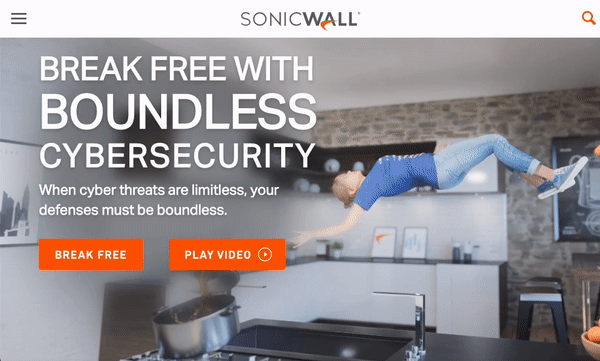
In an impressive feat of animation, website design, videography, and most of all creative brainpower, Bluetext accomplished its challenge. The Bluetext and SonicWall team combined forces to bring new energy and direction to the SonicWall Boundless Cybersecurity campaign. In two years the campaign has evolved to new heights, but just like SonicWall security, the potential is boundless. Stay tuned to see how the campaign further evolves in 2022, and contact us to see how we can develop a state-of-the-art campaign for you.
62 seconds. That’s the average amount of time a user will spend on a website before hopping to another page. 62 seconds for your website to show off all your company has to offer. 62 seconds for you to create a spark of interest that will keep your customer’s cursor away from the dreaded back button. The attention span of modern internet users is a fickle thing, dashing between emails, articles, quick searches, and more. So when you have only a little over a minute to hook a viewer, you better make every second count. A beautiful landing page can grab a viewer’s attention, but a strategically crafted landing page will keep them there. Below are some tips that top digital marketing & website design agencies use to hold the attention of your audience when they land on your site.
Helping Your Users Take Action with Interaction
A favorite UX design practice to encourage digital engagement is the use of interactive elements. This elevates the user experience from passive observer to a participant (referring to any degree of interactivity) on your landing page. When inviting users to interact with content, UX designers tread a fine line between doing too little and asking too much from their audience. Subtle elements such as eye-catching hover states and scroll-initiated animations are one way to get the user involved and create interesting effects based on their cursor movement or scroll. The logic behind these interactive elements is basic psychology — rewarding the user for viewing your content or scrolling encourages them to continue this action. Once visual interest is sparked, the user is more likely to continue scrolling on-page to view content and eventually reach a lead generation form.
Lending Your Users a Hand with Custom Cursors
Another top trend in interactive content is custom cursors. Brands are beginning to implement custom cursor shapes and styles, and even animations triggered by placement on-page. One of Bluetext’s favorite examples of interactive landing pages is Asimily, a page with several subtle interactive elements, including new content triggered on scroll, animated hover states, and typography motion.
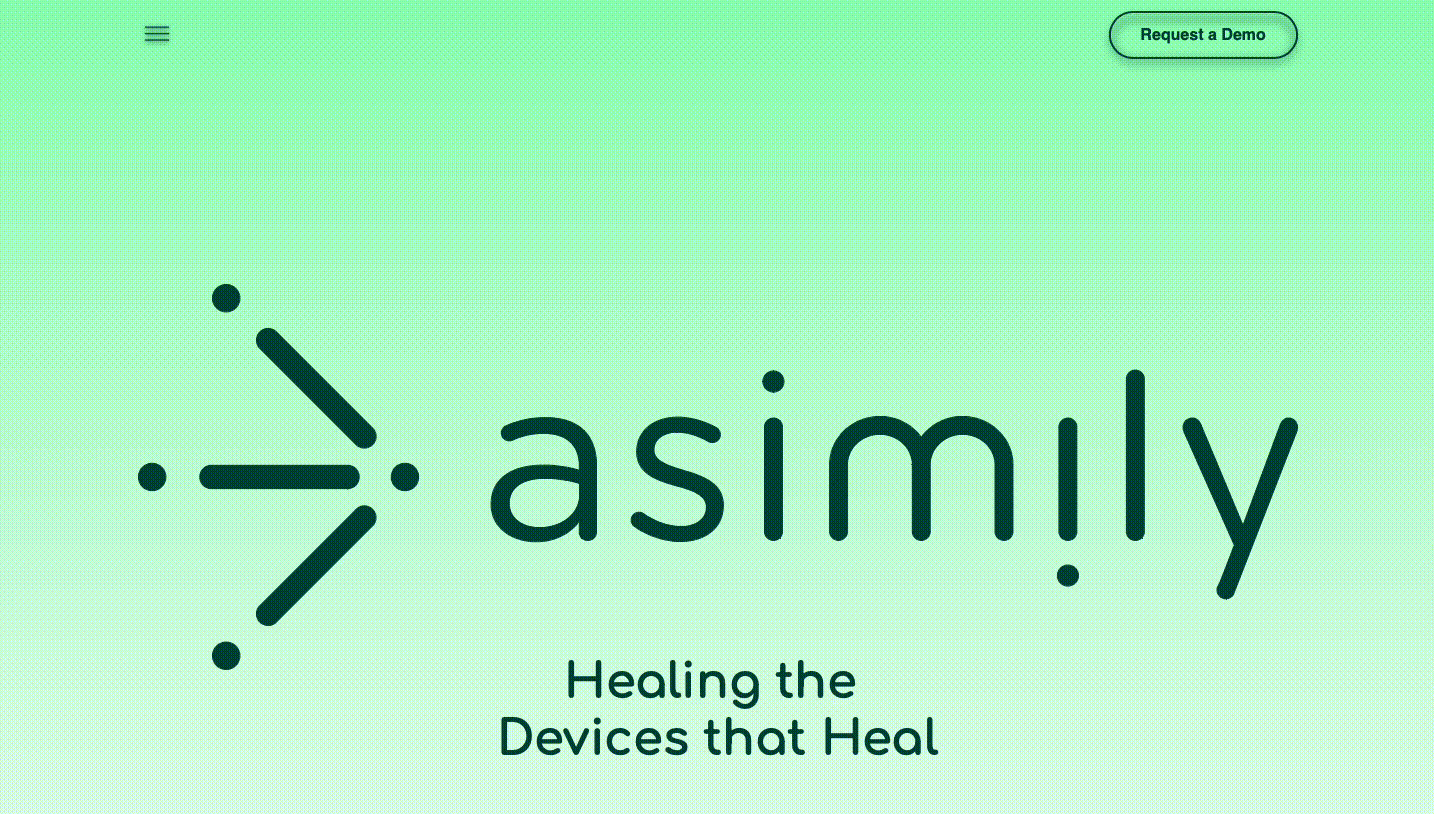
Animations That Keep Your Audience Still
Animation is also a powerful tool to capture and retain attention, with elements like looped animations ensuring that a user catches an effect and can continue to watch it. Animated promotional videos can also be leveraged into powerful lead generation tools. Videos are quite effective for generating leads because they present a simplified version of your offering, and are far more engaging, and require less effort than reading an article. Animations are a great way to convey key information more efficiently and effectively on what your brand has to offer.
Take the Lead with Your Landing Page Strategy
Ultimately, these little changes can make a big difference in converting prospective customers into solid leads. There are many other ways to increase leads to supplement interactive elements. Targeting by channel, limiting navigation, including a clear call to action, and communicating key insights clearly all contribute to a more impactful strategy. Aggregating strong messaging, website design, and user experience best practices can enhance conversion rates on landing pages. Need help achieving better leads? Bluetext is here to bring stronger leads to your company through exceptional content and design.
In true Google fashion, Google Ads is changing the way you can advertise again. Previously, you were able to create Expanded Text Ads (ETAs), but beginning June 30, 2022, all of your standard search campaign ads will need to include at least one Responsive Search Ad (RSA) per ad group. The good news is this can improve your search campaign’s performance if managed correctly. And at least for now, ETAs are not fully leaving. In fact, Google even recommends having two ETAs along with an RSA for each ad group. Diversifying your ad groups sounds great in theory, so maybe Google is doing digital marketers a favor. Nevertheless, change is change, even in the most advantageous versions. So let’s break down why including RSAs can help your business achieve campaign objectives.
First, What Are RSAs?
RSAs could be considered within the next-generation tech wave of AI marketing, almost like a self-driving car for your search campaigns. Responsive search ads let you create an ad that adapts to show more text—and more relevant messages—to your customers. Enter multiple headlines and descriptions when creating a responsive search ad, and over time, Google Ads will automatically test different combinations and learn which combinations perform best.
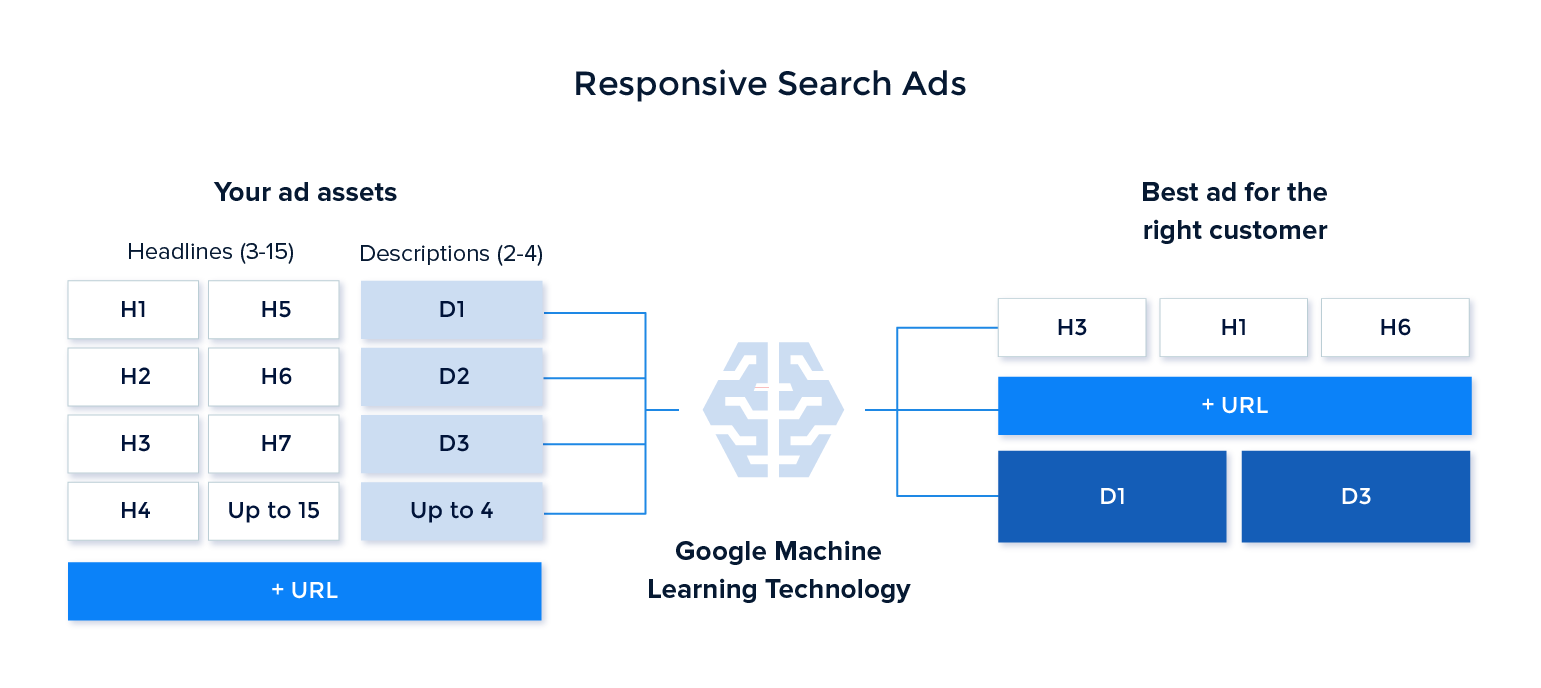
How do RSAs differ from ETAs?
One of the key differences between ETAs and RSAs is that RSAs are more dynamic. Rather than creating multiple ads for different users, now you can create a single RSA with various headlines and descriptions, then Google will automatically tailor the ad to fit the user’s needs. RSAs allow you to set up to 15 different headlines and up to 4 different descriptions. The drawback to this new method is that you can’t preview the exact combination of text users will see, so you need to ensure your headlines and descriptions can all work together. But more on that later!
While ETAs give you more direct control over your ads, they also require you to update them more frequently to remain relevant. RSAs however require fewer updates since they can provide fresh combinations of headlines and descriptions to users on each visit. This ensures your ad copy doesn’t go stale and can match up top-performing headlines to the potential customers. The tradeoff for this benefit is that RSAs typically take longer to set up, as they require more thought initially.
So how can you prepare?
One of the things you can start doing is experimenting with RSAs for testing purposes. Meaning, you should continue creating your ETAs for now, but supplement them with RSAs to get the hang of the upcoming change. This combined approach allows you to experiment with your optimal ad copy while also leveraging Google’s machine learning insights. Beyond that, you can experiment with pinning headlines in your RSAs. This gives you similar control of your ads to ETAs by ensuring specific copy appears in the first, second, or third position of your headlines.
Machine Learning-Based Recommendations
Google’s shift towards RSAs is pushing advertisers to rely on Google’s machine learning algorithm more and more. A benefit of this change is more relevant recommendations for your account’s performance. While these recommendations can help you discover new relevant features and improve your bidding strategy, an experienced digital marketing agency such as Bluetext can help steer your campaign to success.
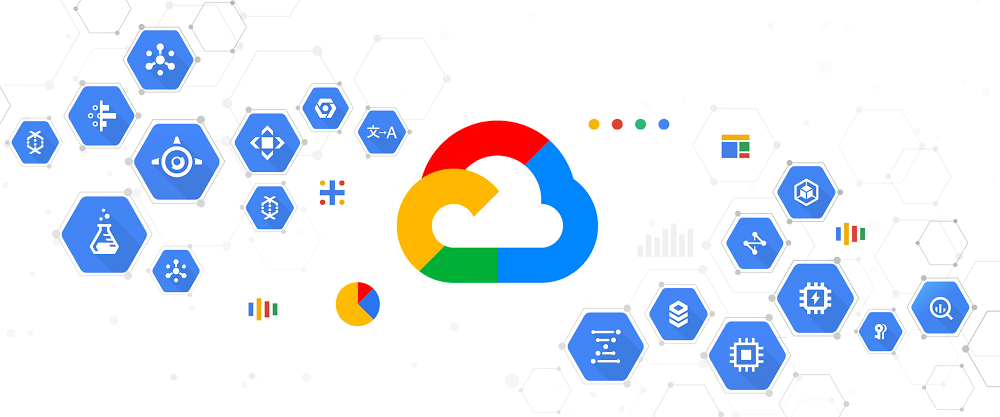
Ongoing Performance Monitoring and Improvements
While the recommendations page can assist you in finding some trends based on historical data, you’ll still need valuable data to base those decisions on. That’s why any good campaign should utilize ad variants to test different messages. That way your historical data can reflect a range of ad variants and you can determine which combinations work best. This also allows you to determine the best way to tweak each ad for ongoing performance optimization.
When it comes to these ongoing performance-based adjustments, you should do your due diligence in checking the data. But data is data, without proper interpretation of insights, there are no actionable changes to truly optimize your ad spend. That’s where digital marketing expertise can make a difference. Bluetext’s search campaign experts are skilled at sifting through marketing data to identify trends and recommend areas for improvement. Want to learn more about how Bluetext can help your ad campaigns thrive? Get in touch with us here.
The needs of a modern consumer are not static; they are constantly moving and advancing, shifting and changing. Customers adopt and discard products at breakneck speeds, seeking new opportunities for enjoyment and discarding them at the first sign of trouble. For a product to remain relevant in the eyes of today’s consumers, it must be able to not only meet their present needs but evolve alongside them to seamlessly adapt to future needs. Effective product management requires two critical steps; first, a deep understanding of how consumers use a product, secondly the ability to leverage that knowledge into actionable improvements. To do so, your business must understand product intelligence and its essential role in an impactful relationship with your customers.
What Is Product Intelligence?
Product intelligence refers to the use of software to collect and analyze data about a product’s performance with users. These systems gather and interpret information about how users’ interaction delivers critical insights on strengths and opportunities for improvement. Product intelligence also takes into account external factors that influence the customer relationship. Shipping, marketing, customer support, and countless other service touchpoints all influence consumer perception and ultimately the experience of your offerings. Product intelligence software helps aggregate these factors to evaluate the performance of your product holistically.
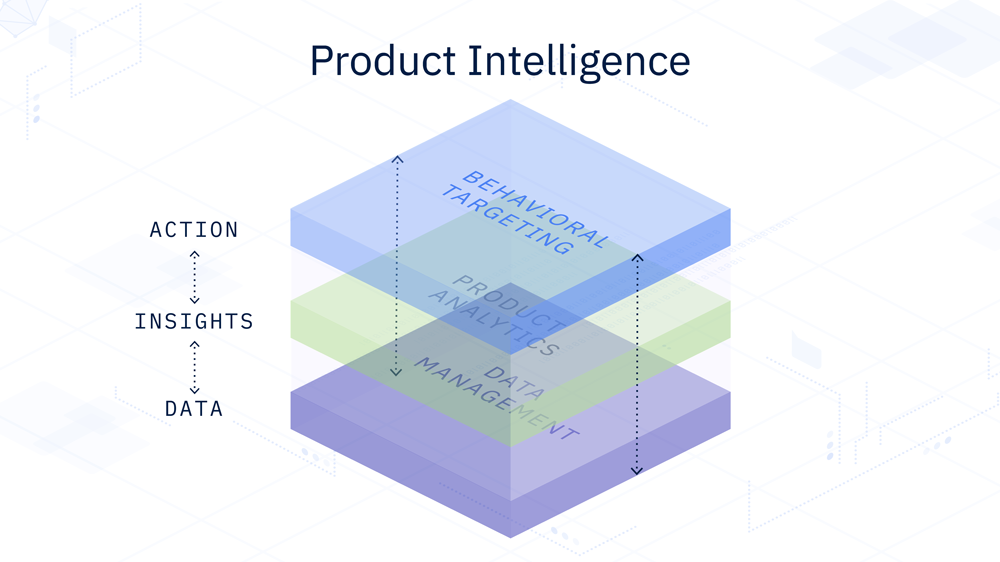
The ultimate goal is to create a positive feedback loop that enables product teams to iterate and innovate with greater speed and higher accuracy. By leveraging critical insights about the customer experience, product management teams can implement improvements to engage, convert, and retain users more effectively.
Product Intelligence Best Practices
- Understand the Customer Journey – While website interactions and app behavior are important, you need to include insights from marketing campaigns, ad spend, and other touchpoints to drive a deeper and more impactful understanding of your customers. Analytics, behavioral targeting, and customer data management cannot remain isolated from each other when optimizing product experiences.
- Collaboration Cannot Be an Afterthought – Services and integrations don’t get you a great product experience; teams do. For product intelligence to make a real impact on your business, you need to support efficient collaboration among product teams. That means being able to keep pace with rapid question-asking, in-depth exploration, agile decision-making, and generally enabling the most frictionless product development process possible.
- Assess Your Competitive Landscape – Your product offerings don’t exist in a bubble, and understanding the potential interactions consumers could have with the competition helps guide you towards truly differentiable improvements. You should strive to know your competitor’s products, strategies, and marketing tactics just as well as you know your own.

Why Is Product Intelligence Important?
Consumer preferences can change in an instant, and companies that can’t keep pace are destined to fail. Product intelligence ensures that your business will never be left behind by shining a light on the key factors that influence whether or not a consumer buys and continues using your products. Whether it’s through illustrating conversion paths, documenting user interactions, or detailing which marketing campaigns attract new visitors, the product intelligence process provides a holistic view of how your product adds value to people’s lives.
Navigating the high-stakes challenge of effective product marketing can seem like a daunting task. That’s where Bluetext can support. From omnichannel media campaigns to product videos & landing pages, Bluetext’s digital marketing experience can ensure customers old and new take notice of your company.